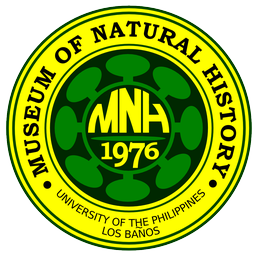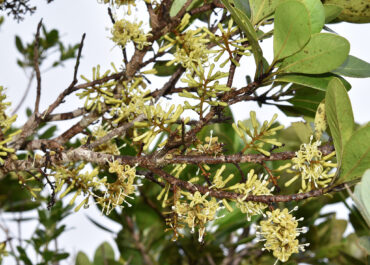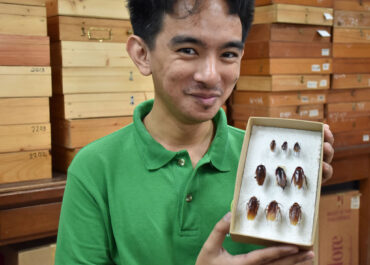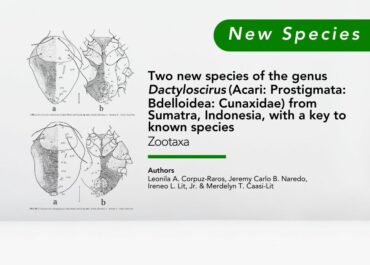New species Philippine False Gecko described from several forest fragments of the Bicol Peninsula
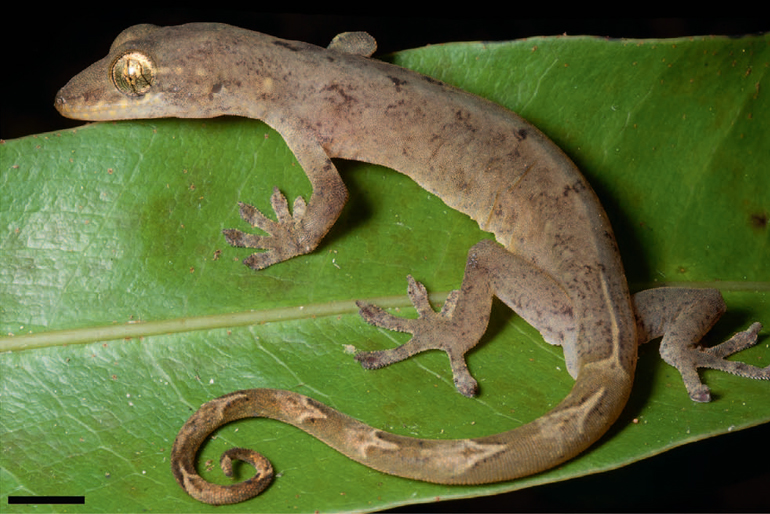
A new Philippine False Gecko, named Pseudogekko hungkag, has been described from Sorsogon province by an international team of herpetologists, after thorough study of field collections made in the Bicol Region from 2015–2017.
Camila G. Meneses, a junior researcher at the UPLB Museum of Natural History and member of the field expedition team shared that the discovery has been recently announced, and the descriptive article published, by the international, peer-reviewed journal Herpetologica.
The new False Gecko has become the 10th species of Pseudogekko, the Philippines’ only genus of gekkonid lizards that is entirely endemic to the archipelago. Although several of the more recently-described species in this genus have only been recognized formally in the last decade, a number of these enigmatic forest lizards are particularly rare, mysterious, and hard to find—all of which translates to their species diversity coming to light just now.
“Pseudogekkos are rarely collected in the field, and if so, occurrences are sometimes only represented by a few individuals,” Dr. Rafe Brown, lead author of the discovery, shared in an email.
Philippine False Geckoes are very secretive, preferring to thrive in highly specialized microhabitats that are variable, unpredictable and often difficult to notice, even by experienced field biologists. Coupled with their cryptic color and look, Pseudogekkos are notoriously hard to find and capture.
The recognition of this particular species was initiated by the observations of Jason B. Fernandez, who recognized the uniqueness of the new species and photographed a specimen on Mt. Pocdol, Albay Province, in 2013. That single image turned out to be the clue that led to the eventual discovery of the newly described Pseudogekko hungkag.
The holotype of the new species is a female that was collected on Mt. Jormahan in Irosin, Sorsogon in 2017 (close to the historically, well-studied field site of UP’s own D. S. Rabor, who first characterized avian species biodiversity in Sorsogon), along with two other females and two additional male specimens.
According to the published article, the name Pseudogekko hungkag was “derived from the (Filipino) adjective hungkag, meaning ‘‘hollow’’ or ‘‘empty,’’ and used in reference to the new species’ unique use of hollow cavities and crevices (hollow bamboo trunks/stems, cavities in tree branches, and other tube-shaped, or sheltered microhabitats).
“We observed the animals’ behavior during our field work in three areas on the Bicol Peninsula, in particular when we approached individuals with our headlights,” Brown recalled.“ Their tendency and ability to hide in hollow areas makes them extremely difficult to find; it may also make for an effective defense mechanism against predators,” he added.
However, Brown shared that the conservation status of this new species is still unknown. “It is tempting to speculate, but we cannot assume that their cryptic behavior is the key to understanding how the new species thrives or whether they are more widespread throughout Bicol,” he said.
Apparently, due to logistical challenges, surveying more areas in the Bicol Region is a complex hurdle; to date, researchers have not been able to confidently determine the new species’ full distribution.
“Most likely, P. hungkag is restricted to relatively undisturbed forest habitats at low- to mid-elevations—most of which currently are not protected in the Bicol Region,” Brown shared. “But documenting whether the species does occur within the critically-important protected areas of Bicol is an exciting prospect for future collaborations!”
According to the researchers, viable populations of the new species may be present in protected areas surrounding Mt. Bulusan, Mt. Mayon, Mt. Malinao, Mt. Isarog, and the Caramoan Peninsula, but determining the significance and suitability of these areas to the conservation of P. hungkag and other herpetofauna has some challenges.
“Unfortunately, as of now, biologists have faced logistical hurdles for conducting scientific research on Mt. Bulusan, which is a fairly active volcano,” Meneses said. Their group hopes that a more comprehensive Bicol Faunal Regional herpetological diversity survey effort can be undertaken in the near future.
——————————————————————————————————————–
For more taxonomic details of the new species, go to Herpetologica, 76(3): 315-329 (https://doi.org/10.1655/Herpetologica-D-19-00029.1) authored by Rafe M. Brown (University of Kansas), Camila G. Meneses (UPLB Museum of Natural History), Jason B. Fernandez (independent field biologist), Michael A. Cuesta and Michael A. Clores (Ateneo de Naga University), Perry L. Wood, Claire Tracy and Matthew D. Buehler (Auburn University) and Cameron Siler (University of Oklahoma).
Search
Archives
Categories
- Announcement (21)
- Feature (21)
- News (141)
- Press Release (55)
- Research (4)
- Services (3)
